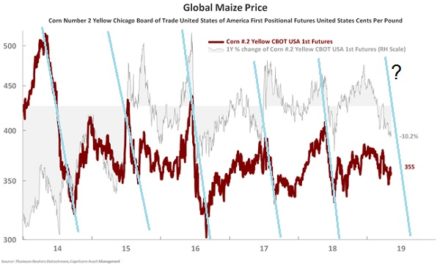
A three billion rand cash flow injection is no joke
The sovereign, Namibia, gave its second big step into a foreign capital market on Wednesday when the results of the tender to place the first tranche of an extended note programme, were announced. The first giant leap into a foreign market happened last year with the placement of a US$500 million Eurobond in the London capital market. According to the Ministry of Finance, the Eurobond in the meantime, has received an international award as an outstanding sovereign bond.
In May this year, it became known that a small hand-picked team is working on the nitty gritty to launch a major bond programme in the South African capital market. This resulted in a so-called Note Programme Memorandum, posted on the Bank of Namibia website on 01 November. This impressive 92-page document draws the framework within which the note programme will be steered. The first 57 pages consist of an unbelievingly complicated, but comprehensive description of the programme, covering in essence, every conceivable and inconceivable eventuality that can be associated with such a large issuance. It is a flood of legalese, not for the faint hearted, but it also, for the first time indicated the anticipated value of the programme, once issued in full, i.e. N$3 billion, or to comply with JSE regulations and South African law, R3 billion.
Pages 58 to 92 provide background information and an analysis and overview of economic conditions, and ostensibly serves the function of a prospectus to investors.
So the team of arrangers drafted an Applicable Pricing Supplement, again legalese for actually naming an asking price, decided on a spread, and set off on a roadshow to South Africa’s large institutional investors in September. The response was overwhelming. So much so, that the tender for the first tranche was massively oversubscribed. During the roadshow presentations, the first tranche was not capped. Total commitments for R1.7 billion were received in the lower bracket of the 105 point spread that was decided on strategically, in advance. Eventually, the ministry decided that only R850 million will be issued. A major concern at that point was not to drain the local capital market of liquidity but to continue at the same stated pace of the local sovereign debt programme.
Going by the results of the first tender, the ZAR note programme will have a limited effect on Namibian assets held in South Africa by the appointed asset managers. Of the total R1.7 bn tendered, only some 15% constitutes Namibian assets. As a comparison, another 15% came from foreign (offshore) investors.
The official date of issue is Monday 19 November. All the myriad of calculations to determine yield, payment due dates, and all other aspects as described and defined in the Note Programme Memorandum and Applicable Pricing Supplement, become active on this date. The tranche is issued for ten years so the redemption date is 20 November 2022. The tranches in the note programme are benchmarked to the R2023, a comparable South African sovereign bond also listed on the JSE.
As far as I know, Namibia is the first sovereign outside South Africa, to use this venue to garner the massive South African capital market. For us, this is a giant leap. It is not our first foray into foreign capital markets, and it is also not the biggest, but it is a major placement by a SADC member in a market where its size can certainly be described as unlimited, in relation to the capital requirements of countries in southern Africa, excluding South Africa. Seeing that it is denominated in Rand, it also removes currency fluctuation risks. The interest we pay on the Eurobond is substantially lower, but the exchange rate risk cannot be ignored as amply demonstrated in the sudden deterioration of the Rand since the mine strikes started. I view the 8.25% yield as a fairly beneficial rate. It is certainly in the lower bracket of the targetted spread, but it does not compare to the 4.5% we pay for the Eurobond. If one considers the substantial reduction in risk by issuing in Rand, it is perhaps best to be philosophical and view the higher rate as a premium for currency safety. In any case, the Eurobond did not contribute to local liquidity as most of that money has gone into bolstering our foreign reserves.
Very enlightening in the Note Programme Memorandum is the reference to the parity link with the Rand. There, explicitly, black on white, I saw for the first time in writing an undertaking that the Namibian financial authorities have no intention, either now or in future, to sever the Rand link, or to suspend the Rand as legal tender in Namibian territory.
This ZAR bond is a very progressive move. I am convinced that it will become a strategic pointer to other SADC sovereigns, and that, over the long term, it will help in no small measure with the economic integration of the development community.










































